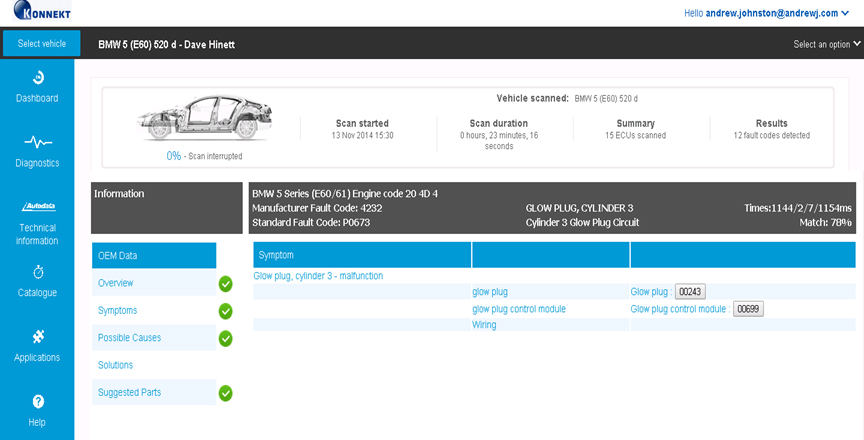Knowledge Base Development for ID-Workshop Ltd.
Summary
Development of a prototype knowledge base supporting automotive fault-finding
Description
The ID Workshop solution provides comprehensive vehicle diagnostics, but provides little or no guidance on how to efficiently identify and rectify the underlying causes of a problem. I developed a companion system which bridges that gap.
The initial version focused on synthesising information from a number of external sources to help mechanics identify parts recommendations which can then become queries in a parts catalogue. This was progressively extended to deliver curated expert guidance on testing and diagnosis, and to allow the mechanic to explore a complex set of faults and possible solutions graphically, via a pure HTML interface which runs on any device or browser.
I developed an agreed strategy whereby this can progressively evolve with machine learning capabilities, both supervised (e.g. known successful solutions to similar symptoms) and unsupervised (e.g. preventative maintenance for common problems as a vehicle ages). I undertook some early work on candidate algorithms, but these will necessarily evolve in parallel with the exploitation of ID Workshop and as its data set grows.
The screenshot shows an intermediate step in the fault resolution process, where diagnosis has reported faults, and the application is showing possible root causes and potential parts requirements.

Problems and Challenges
Complex interactions with multiple content sources. Intermittent funding.
Outcomes
Rapid development of a working first version. Establishment of a strategy to move progressively from expert system to advanced AI
Timescale
April 2015 – February 2017
Current Status
On hold awaiting further funding for IdWorkshop Ltd.
Tools and Technologies
Technologies: Microsoft stack (ASP.Net, SQL/Server), HTML5/CSS/SVG, Python + machine learning libraries (e.g. pandas, sklearn), Hadoop/spark
Tools: Visual Studio
Abstract
The ID Workshop solution provides comprehensive vehicle diagnostics, but provides little or no guidance on how to efficiently identify and rectify the underlying causes of a problem. I developed a companion system which bridges that gap, synthesising information from a number of external sources to help mechanics identify parts recommendations which can then become queries in a parts catalogue.
 Thoughts on the World (Main Feed)
Thoughts on the World (Main Feed) Main feed (direct XML)
Main feed (direct XML)